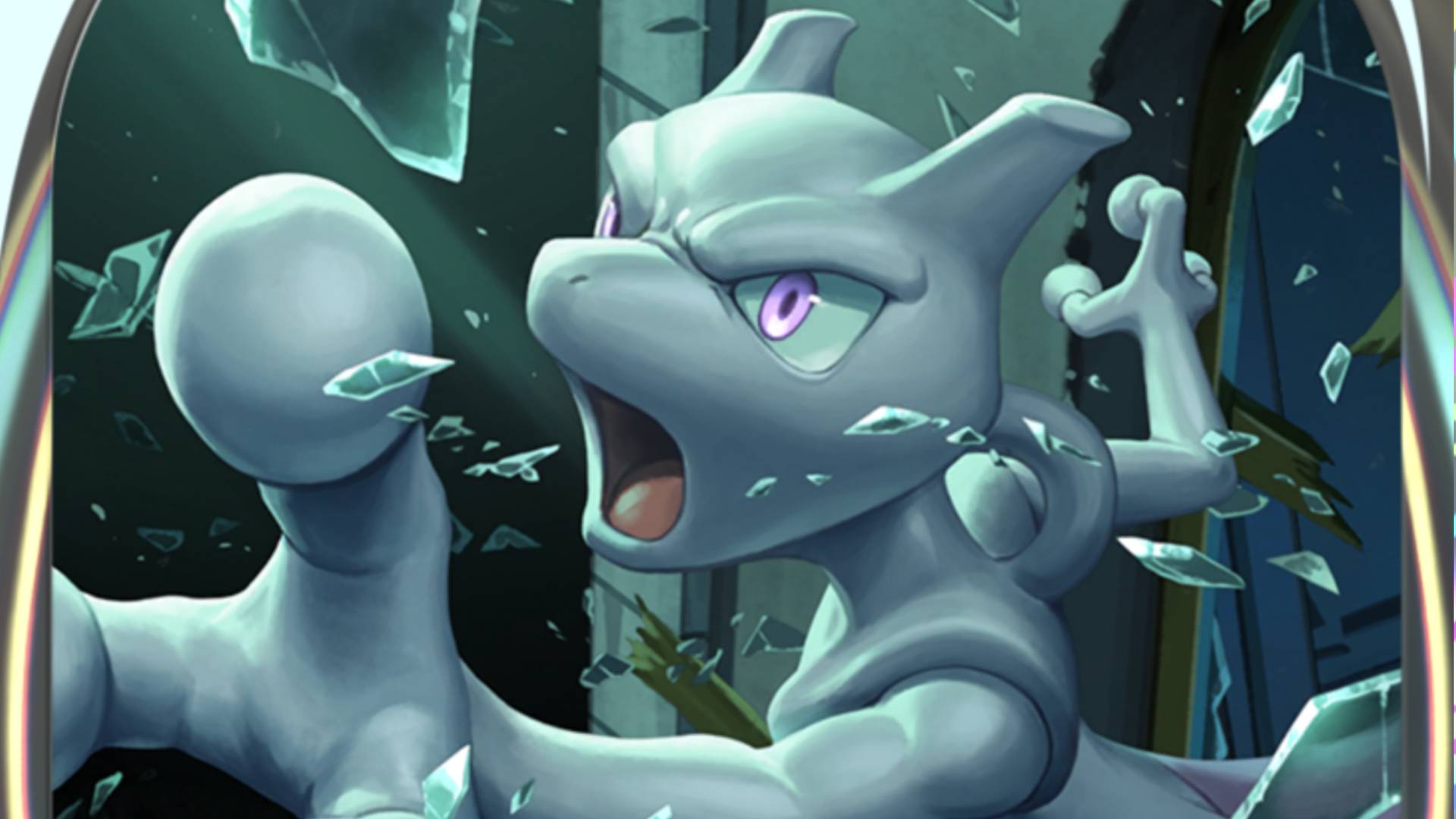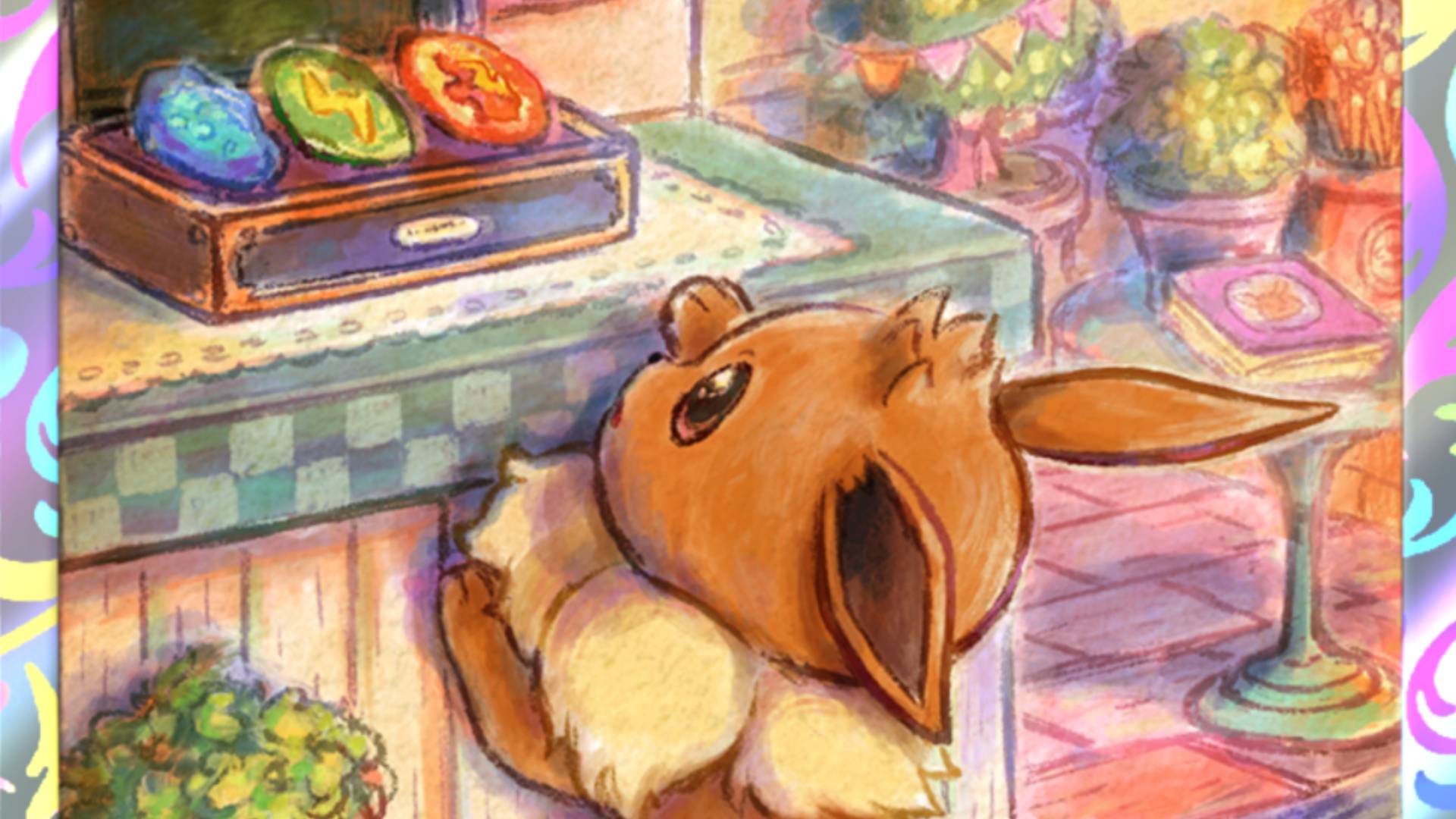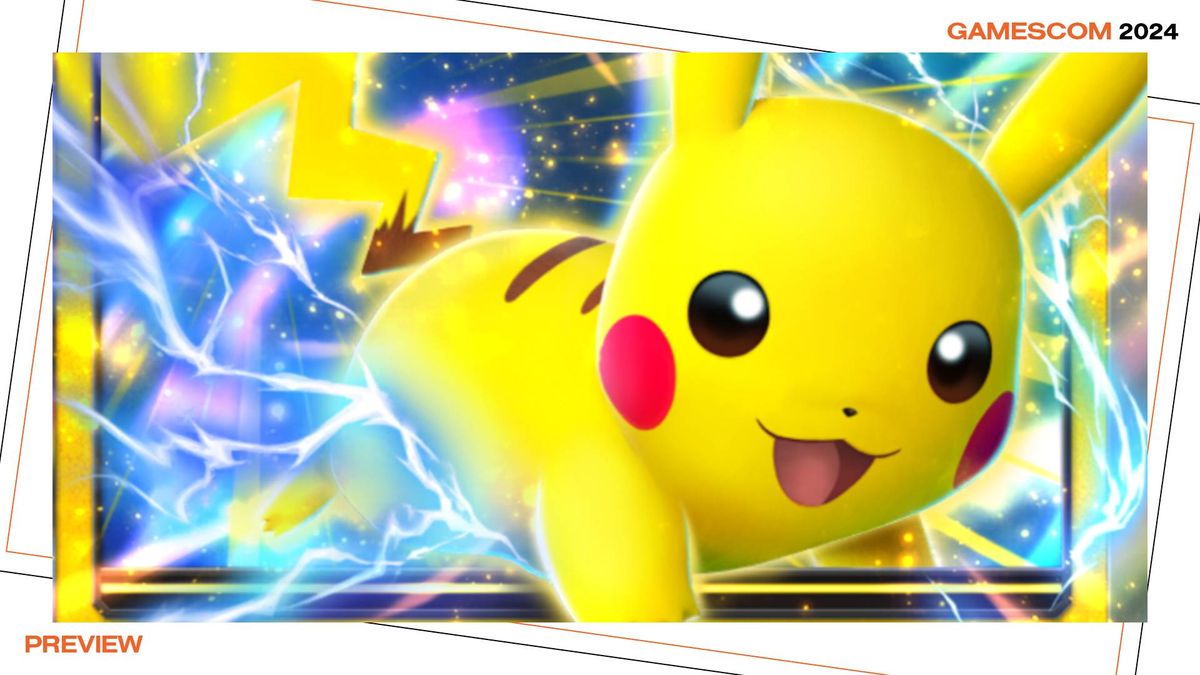Pokemon Trading Card Game Pocket – the mobile version of Pokemon’s hit physical card game – is almost here. From my hands-on time with the game, it looks like it’s managed to strike a solid balance between appealing to card collectors and battlers alike, all while maintaining what makes the TCG special.
At its core, TCG Pocket’s concept is simple: open and collect digital booster packs of Pokemon cards to build a collection to lovingly admire, and use them to battle against opponents in the 1v1 card game, which itself has been streamlined to suit the mobile app. Each day, players can open two booster packs (each containing five cards) for free, while those willing to splash their cash can get their hands on extras (but more on that later).
Right from the get-go, TCG Pocket throws you into the thrill of opening packs, and it’s immediately apparent that the developers have captured the small details you’d see in the physical card game to make opening the digital packs just as exciting. General manager at Creatures Inc., Ryo Tsujikawa, tells me (via interpreter) that the team “really prioritized on that sensation of opening the pack, that feeling of ‘I wonder what kind of Pokemon I’m gonna get,'” and that certainly comes through in the delivery.
Something old, something new
From drawing a line over the top of the packs to tear them open, to being able to admire the sparkly cards by moving them around as if you’re holding them to the light, a lot of love for the card game has clearly gone into TCG Pocket. I got lucky right away with a stunning full-art Golbat card, and even in a digital format, seeing a rare card appear in your hand is enough to make anyone giddy.
While a mobile game could never hope to replicate that same rustle in your hands as you open a pack, or the distinctive smell of the cards themselves, it really does feel like the next best thing – preserving that “real feel” that Tsujikawa says the devs were aiming for – and I found myself opening packs with just as much fervor as I would in real life. There’s also the added level of excitement for the new Immersive Cards, TCG Pocket-exclusive additions that are animated, and take you within the illustration to show a wider view of the world shown on the surface. As art director Satoru Nagaya explains (via translator), this is something that, by virtue of the format, “the physical cards can’t offer,” and an idea that ultimately arose after the team said, “‘OK, let’s try something new.'”
Collections can be boosted even further thanks to the community, too, with a special feature called ‘Wonder Pick.’ With stamina that you accumulate over time, you can scroll through a list of packs that have recently been opened by other players, and choose one to get a random card from (without actually stealing it from the player, of course). And yes, this can be used to get rare cards, too – I got my hands on a full-art Squirtle card thanks to my own lucky Wonder Pick during the session, and even if there’s no guarantee that you’ll get the card you’re hoping for, it’s a fantastic way to give players a greater chance of collecting something they really want.
Keeping it simple

As mentioned above, though, it’s not all about collecting the cards. Try as I might, I’ve never been able to get into the Pokemon card game like I have the video games, but I can fully see myself sinking hours into TCG Pocket’s simplified format. Each player wields a 20-card deck (a third of the size of a deck in the physical game), and rather than competing to be the first to earn six prize cards, it’s first to three points – you earn one when you knock out one of your opponent’s Pokemon, or two if you knock out a powerful EX card. Within 30 minutes of loading up the app for the first time, some hands-on tutorials concisely covered everything I needed to know about the quicker format, which was much appreciated given how rusty I was with the standard rules.
Combined with the fact that you don’t need to spend any money at all to play TCG Pocket, all of this combines into a package that makes the mobile game feel very approachable. Tsujikawa explains that rather than just aiming for an audience consisting entirely of existing TCG fans or newcomers, the team was hoping to pick up on those who “wanted to go into TCG but were a bit intimidated, or people who stepped into TCG but were kind of like, ‘OK, this is a bit difficult,'” and coming away from my hands-on experience, I can see this being the case.
Pokemon(itization)

Of course, while it is free-to-play, there’s still an optional level of monetization in TCG Pocket. Players can open a third pack of cards every day by subscribing to the monthly Premium Pass subscription service for $9.99 a month (which also gives access to ‘Premium Missions’ to unlock extra cosmetics). Other than that, they can also spend Pack Hourglasses to reduce the time needed to open a pack by an hour, or Poke Gold to reduce it by two hours, with the smallest pack of the latter costing $0.99 (this currency can also be spent on in-game accessories). Whether you consider these costs worth it is, of course, entirely up to you, although optimistically it feels like free-to-play fans won’t feel punished for not spending money on the game. After all, two packs of cards a day will still build up a collection pretty fast, especially with the extra Wonder Pick cards.
Coming away from my hands-on session, I can definitely see TCG Pocket being a mainstay on my phone as soon as it’s out. With new cards available to open every 12 hours, there’s always going to be a reason to log in frequently, and I’m excited to see how deep the streamlined battle system goes, too. Now though, I’m just hoping I’ll be as lucky with the cards I get when the game launches.
GamesRadar+ was in Cologne playing the most anticipated new games of 2024, and speaking to the developers bringing them to life. For more of our hands-on previews and exclusive interviews, visit the Gamescom 2024 coverage hub.










